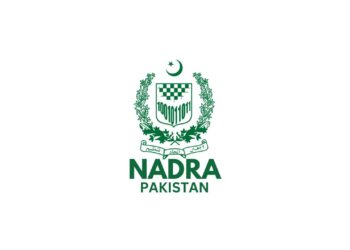Pakistan is a country taking great leaps forwards. Transport infrastructure, renewable energy, business and health projects have all accelerated during recent years. Engineering has been essential to improving the lives of Pakistanis.

Many thousands of Pakistani people have been enrolling in engineering courses hoping to take advantage of the many infrastructure and management jobs that are emerging. There are several engineering institutions around the country that can offer training. Some specialist further education courses can be accessed online through institutions abroad. Click this link for more info.
Increasingly, the trained engineering workforce in Pakistan is contributing to impressive mega projects that hugely benefit the nation and its people. Here, we list four of the most impressive Pakistani engineering projects. Some of these projects have been completed, some are underway and others are still in the planning phase.
Tarbela Dam Project
Pakistan has long been at the mercy of the elements. Because of the nation’s mountainous terrain, floods have long made agricultural work very risky, with farmers sometimes losing entire crops to seasonal flooding. Each year, lives are lost and livelihoods endangered by river water. Equally, farmers were left with a completely inadequate amount of water during the summer months.
A massive engineering project has offered some respite from this cycle. In 1968, construction began on a massive dam on the Indus river. Its purpose: to provide a controllable irrigation source, end Pakistan’s reliance upon unregulated river flows and prevent flooding.
The Tarbella Dam – as the project became known – was the largest fill type dam in the world when it was completed in 1984. Its reservoir can store 13.4 billion cubic meters of water. This staggering amount of storage was necessary in order to provide irrigation to the farmers of the Indus Basin throughout the entire dry season. The main levy of the dam is 9,000 feet long.
It was a truly international engineering effort involving engineers from Italy and Pakistan and financial aid from the World Bank. French, German and Swiss engineering firms were also involved. The project required geology, structural engineering, electrical engineering and systems engineering expertise. It is truly a mega project.
The dam had a secondary purpose: it contains turbines that generate hydroelectric power. The raging waters of this rugged nation are a key renewable resource. Engineering is the key to unlocking this amazing potential.
The China Pakistan Economic Corridor (CPEC)
This is not one project, but a massive program of interlocking engineering infrastructure projects that are being kickstarted in order to improve trade links between China and Pakistan.
The China Pakistan Economic Corridor (or CPEC for short) aims to improve rail, road and sea routes both within the Pakistani interior and along its border with China. If it is successful, the changes it brings will be huge. All of Pakistan’s 2,655 kilometers of railway track will be upgraded – allowing trains to move through the country at more than double their current speed and vastly increasing the capacity of the rail system.
It is hoped that this will stimulate local economies along railway lines as well as international trade with China. Theoretically, Pakistanis with new engineering training and skills will be able to put them to use in the long-term working collaboratively with Chinese companies.
China is investing $60 billion in infrastructure engineering projects in Pakistan. Investment in the ML-1 railway project alone is double the projected fiscal development budget of the entire nation of Pakistan.
Of course, there has been skepticism of the project. International observers have noted that the massive loans and gifts are not particularly transparent. This could leave Pakistan in the nasty position of being in debt to its hugely populous neighbor and more susceptible to political manipulation.
Chand Taara Island
An absolutely vast engineering project, the Chand Taara Island will be a man-made high tech business and leisure hub not unlike similar reclaimed islands in Abu Dhabi.
$10 billion is being invested in the manmade island, which will contain “a state of the art amusement park, Art & Culture Museum, Grand Theatre, Concert Hall, International Expo Centre, 5* Hotels & Resorts, Multiple Shopping Malls, Waterfront Walk and Shopping Promenade” according to the Daily Times of Pakistan.
The centerpiece of the island will be the Gwadar Tower – Pakistan’s tallest building. It is hoped that the island will be the centre of a region that will become the largest and wealthiest trading hub in South Asia.
Building an island from scratch is no easy task and involves specialist marine engineering management and operational techniques. It is hoped that the ambitious project will give young Pakistanis opportunities for employment and for collaboration with international engineering firms.
Quaid E Azam Solar Park
Named after the founder of Pakistan, the Quaid E Azam Solar Park is a 100 MW solar plant that opened in 2015. It consists of 392,158 solar modules spread over a 500 acre site in the Punjab region.
The site is the largest of its kind in Pakistan, and faced some unique technical hurdles that required innovative engineering solutions. One of the most perplexing came in the form of dust. It was found that the high dust count of the area had the potential to reduce the effectiveness of the solar panels by up to 40%. The best solution was found to be the simplest: a team of cleaners was employed to scrub the panels every 15 days. This ensured that any buildup of dust was removed before it had a chance to damage the output of the site.
The project has not been without controversy. Many Pakistanis see the project as being a demonstration of the Punjab Region’s political might. Other areas were more appropriate for solar power generation, but were unable to lobby the government for the right to host the Quaid E Azam solar park.
Regardless of its associated controversies, solar power generation is a step in the right direction for Pakistan. Renewable energy is essential for any nation looking to increase living standards without destroying the environment.















